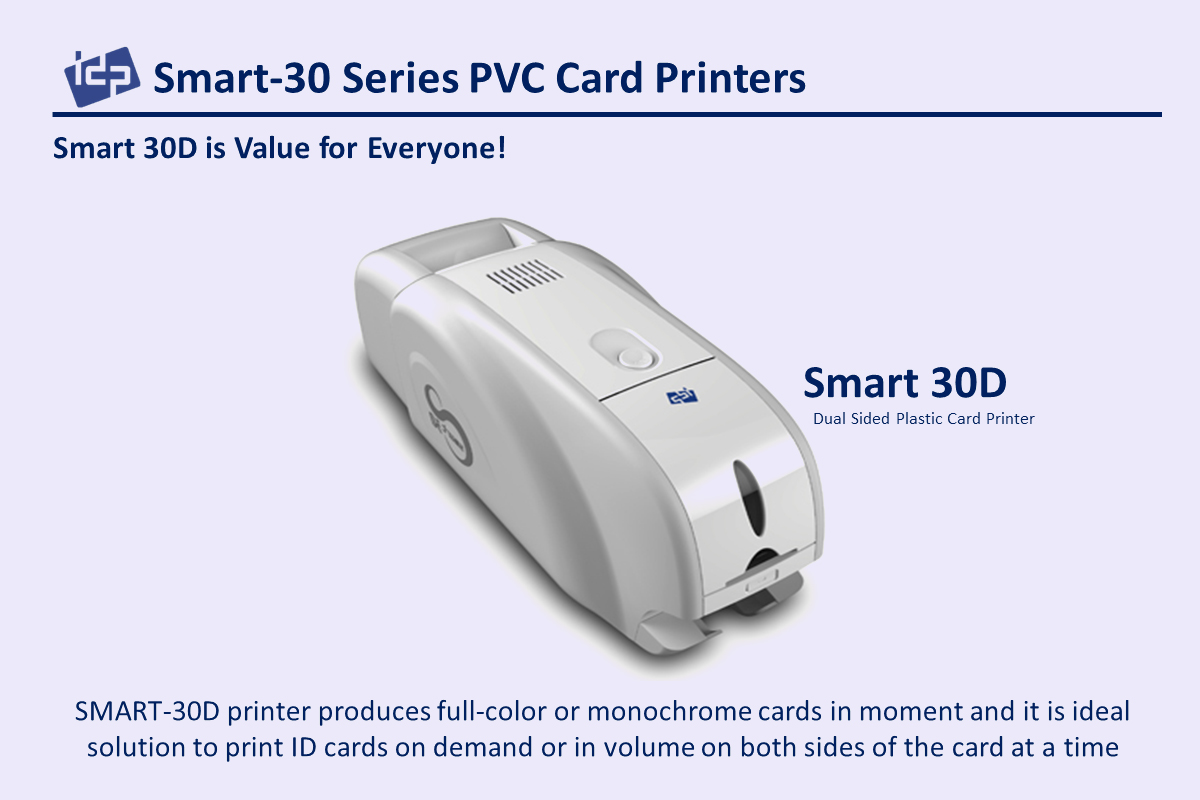
For Further Reading
Card Printing Technology: SMART ID Card Printer has one of the latest technology in card printing. PVC cards (Plastic Cards) need more than just traditional printers, due to their polished nature. SMART ID Card Printer uses a process called Thermal Transfer, to cater specifically to these types of cards.
This process of Thermal Transfer is self-explanatory. A colored ribbon from the printer is placed on the sleek surface of the card, and a thermal print head will heat up the ribbon. This layer of color will evaporate due to the high heat, but instantaneously turns back to its solid state once it reaches the surface of the card. Thus, an image or color is formed on the card. It is a standard performance for card printing to be 300 dpi (300 dots per inch, equivalent to 11.8 dots per mm).
SMART™ID Card Printer offers an array of printing ribbons, to make sure that a design for a card is only limited by imagination, not by the number of colors. Besides the usual monochrome ribbons, various color ribbons are also available, each with its own unique printing options. Some featured SMART™ID Card Printer’s ribbons include BYMCKO Ribbon, a full-color printing ribbon capable of producing high-quality graphics, and also includes an overlay panel on the cards, protecting it further from wear and tear. Another interesting feature is the YMCKFO Ribbon, which is capable of printing ultraviolet (UV) graphics, to be used as a security feature by companies.
—
The basic principle of a card printer is that a plastic card (normally PVC) is passed through a thermal printer head and a color ribbon simultaneously. Through heat given out by the printer head, the color from the ribbon is transferred onto the card. SMART uses 2 different printing processes: Thermal transfer and Dye sublimation
Thermal Transfer
The thermal transfer process is mainly used to personalize pre-printed plastic cards in monochrome. The color is “transferred” from the monochrome (black, gold, silver, red, blue, white, etc.) ribbon onto the card.
Dye Sublimation
The dye sublimation process uses four panels – CMYK color ribbon. During printing, the plastic card passes under the thermal print head several times and each time with the corresponding ribbon panel. Each color (Cyan, Magenta, Yellow, Black) in turn is sublimated directly onto the plastic card. In this way, it is possible to produce a high depth of color (up to 16 million shares) on the card. In the final step of the printing, a transparent overlay (O) is placed over the card to protect it from mechanical wear and tear and to render the printed image UV resistant.

